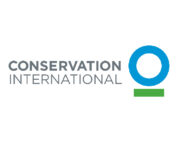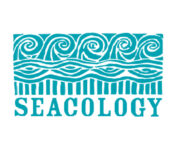Mark Erdmann, the Conservation International’s vice president for Asia Pacific Marine Programs, is “very concerned” about the future of marine conservation in Raja Ampat.
“If there is nothing else done to further control and limit the growth of tourism in Raja Ampat, there is no doubt that within five years we are going to see major problems in places like the Dampier Strait, where it is already reaching the carrying capacity,” he told the Raja Ampat Research and Conservation Centre (RARCC).
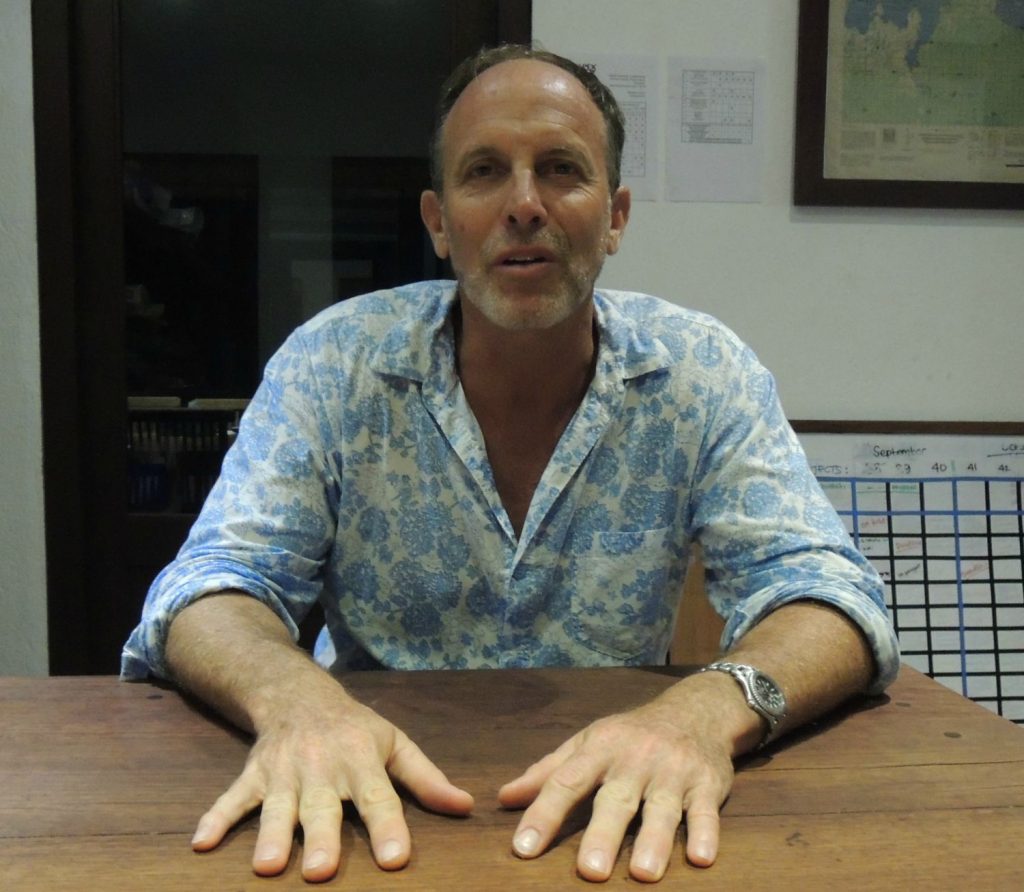
Mark Erdmann
According to the marine scientist, “there are certain areas which are hardly touched by tourism right now and they will probably be OK, but the Dampier Strait in particular really needs some attention right now, because otherwise, it is going to rapidly go downhill.”
Looking at it oceanographically, he added, the Dampier Strait “is really the most dynamic part of Raja Ampat,” because “it is where all the currents are,” so what happens there impacts the rest of the region through the currents.
Mark Erdmann has been largely focused on the management of marine protected areas and, in recent years, he supported the Indonesian government to improve conservation and management of its sharks and rays. The activist has been based in Auckland, New Zealand, for the last three years, after 23 years in Indonesia, and he has been working in 13 countries throughout the Asia Pacific region.
More recently, the NGO decided that 50% of his time should be dedicated to Raja Ampat. “We feel very strongly that this area is by far our most important marine program in all Asia Pacific. It has been our biggest investment up until now,” he underlined. Besides that, the end of certain amounts of funding and the lack of a manager in the area justified the decision. Mark Erdmann is “happy” and “excited” about his new focus because, for the last three years, it has been difficult for him “to watch what has been going on” in Raja Ampat and have no “real authority to try to fix it.”
His two “overarching targets” will be the “marine tourism management” because, after a decade of promotion, now “it got to the point where it is much a threat,” and “making the BLUD [Regional Public Service Agency of the Technical Management Authority within the Department of Marine and Fisheries of Raja Ampat] more effective in its patrols.” “If you don’t have the patrols, it’s not really a marine park,” he highlighted.
The Raja Ampat Marine Park Entry Permit (PIN) – a tourism entrance fee system to help support conservation and community projects – was implemented in 2007 with most of the patrols being done by Conservation International, but later the government took control of it.
“Anything under the government doesn’t have quite the passion and the commitment as it does if it is with the private sector or an NGO, so it’s a matter of really trying to work to bring that standard back up and hopefully make sure we have the right people in charge over there,” the expert said.
Mark Erdmann is also working on fundraising to implement these projects in Raja Ampat among others in West Papua. “We are really concerned about some of the land-based development which is planned in terms of the roads and possible palm oil plantations,” he exemplified.
Conservation International has been working closely with the RARCC and supporting some of its projects. Last year, Mark Erdmann joined the RARCC for a rebreather course with our resident technical instructor Rob Postma.
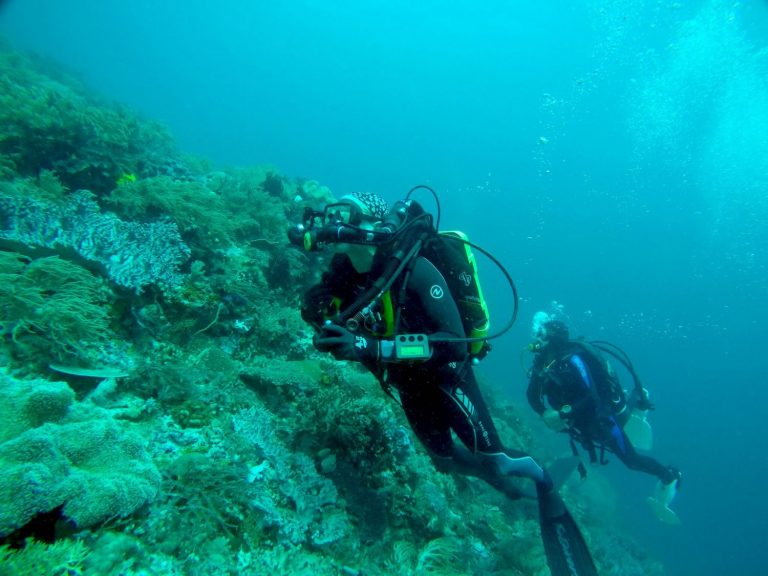
Rebreathing course with Mark Erdmann
The marine scientist said that “a number of programs” organized by the RARCC are “fantastic”, such as Kayak4Conservation, which “is certainly one important right now in terms of economic benefit of communities,” “the work with the sweet potatoes and the fiberglass.”
“I would say keep it up and extend them” and “get better publicity”, he advised the RARCC.
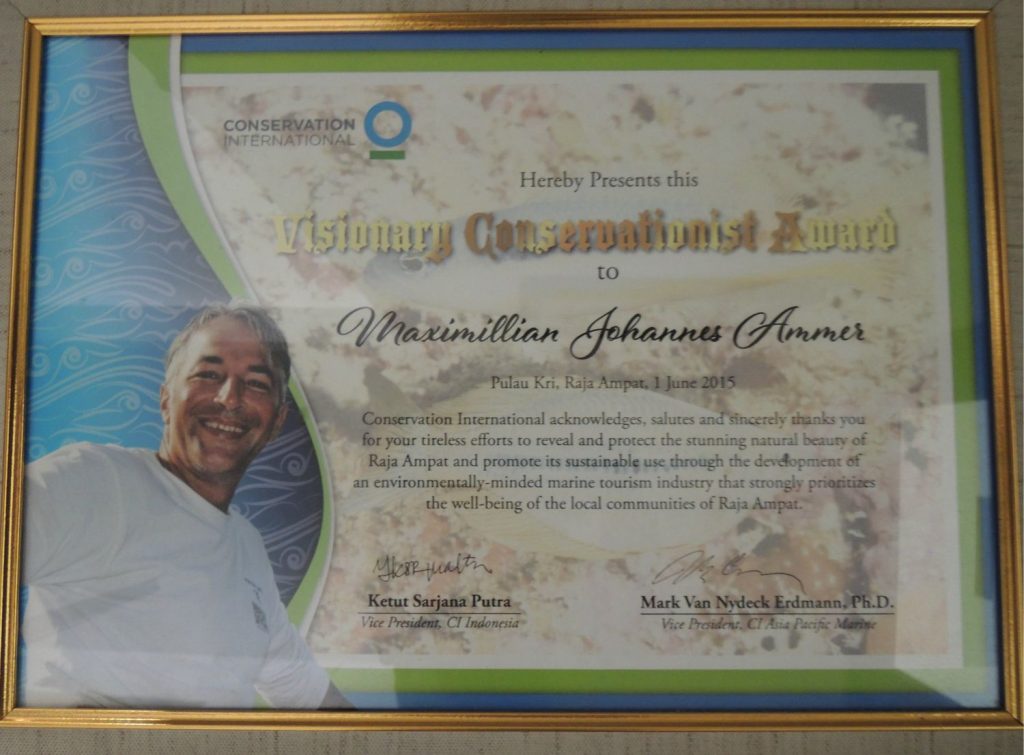
Two years ago, Max Ammer, the RARCC’s director and co-founder and manager of P.T. Papua Diving Resorts, got the “Visionary Conservationist Award”, granted by the global NGO, for his “tireless efforts to reveal and protect the stunning natural beauty of Raja Ampat and promote its sustainable use.”





